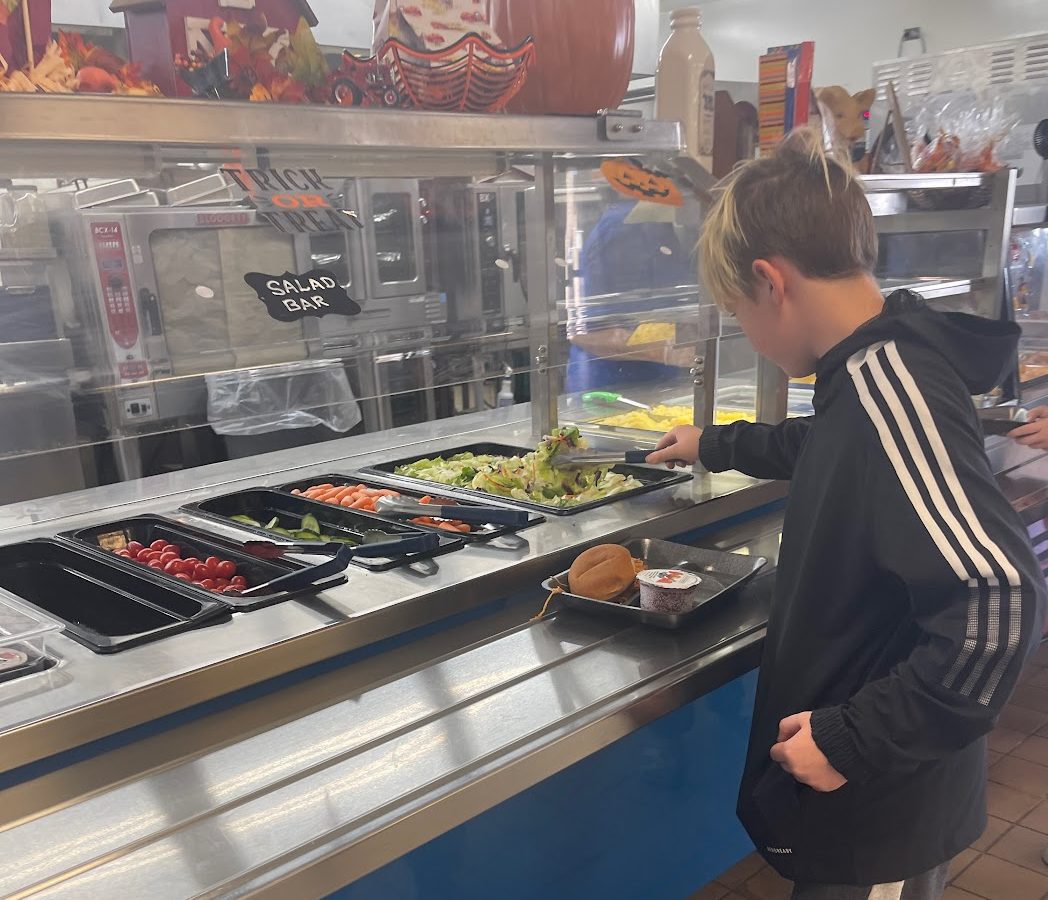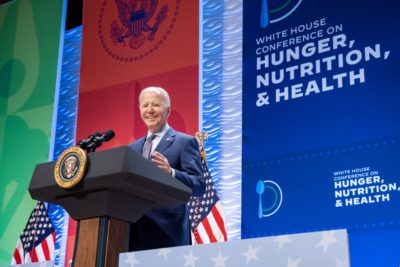

Share this story
|
|
Approximately $1.3 million in school meal debt has already accrued across North Carolina’s school districts as of Nov. 1, a figure that may indicate there are many students who come from households that don’t qualify for free school meals, yet can’t afford to eat during the school day.
“These are the households that we often speak of – of students who are somewhere between 185% of poverty, which is the cut off for reduced price meals, up to 225% of poverty, when students do not qualify for meal benefits,” said Lynn Harvey, director of school nutrition for the N.C. Department of Public Instruction, speaking at a work planning session to members of the N.C. State Board of Education last week.
“And if we look at what’s happening in our economy at this point, relative to the cost of food, the cost of fuel, the cost of housing – families have had to make very difficult decisions,” Harvey said.
At the onset of the COVID-19 pandemic and for the following two and a half years, students across the nation were able to eat breakfast and lunch for free, regardless of what their household income looked like. Beginning with the 2022-23 school year, federally subsidized free school meals for all came to an end; however, those who qualify for reduced-price meals still eat for free, thanks to legislation passed by the North Carolina General Assembly.
Today, students in situations where they don’t have funds for school meals are either charging them to their accounts, even if the accounts have a zero balance, or in some cases, they may be denied a meal depending on the district’s meal charge policy. It’s an evolving situation that North Carolina’s state and district leaders are working together to try to address.
In New Hanover County Schools, Child Nutrition Director Amy Stanley said as of Nov. 7, the district has more than $50,532 in student meal debt – which she said is a significant figure.
“A big concern I have is that we’ve got families that are barely missing the free and reduced benefits,” said Stanely. “And it’s just putting a greater hardship on families.”
There are a variety of reasons why the meal debt is accruing in addition to seeing more families “on the bubble,” or who are economically distressed but don’t qualify for free school meals. In other cases, said Stanley, families aren’t getting the information that the COVID free meal benefits have come to an end, and are still expecting their students to receive free meals.
Pitt County Schools’ School Nutrition Director Gretchen Wilson said she has already seen school meal debt accrue to just under $40,000 as of Nov. 4.
“I think a lot of it has to do with the transition between students eating for free, and now they have to pay – and they’re not used to that,” said Wilson.
Neither district’s school nutrition manager had data available on school meal debt that typically accrued before COVID, and DPI historically has not kept that information on record either – but beginning this year, they will submit this information on a quarterly basis to the N.C. General Assembly so that they can be more informed on this issue going forward.
Supporting economically distressed families
There’s been plenty of buzz recently about making universal free school meals a permanently available academic intervention across the nation. In October, the Biden-Harris administration unveiled a plan that would work toward free, healthy school meals for all. And several states have passed legislation recently to keep universal free school meals available to all students, including California, Maine, Massachusetts, Nevada, and Vermont.
But in the meantime, Harvey told members of the Board last week that there is a potential way to support more students identified as coming from “economically distressed households” who are having trouble paying for school meals, and it involves supporting the expansion of something called the Community Eligibility Provision (CEP). Language that would expand CEP is currently written into draft federal child nutrition reauthorization legislation that is being considered by Congress.
In short, the CEP enables schools and districts the ability to provide school meals at no cost to all students, regardless of economic status, if the student population meets a certain threshold for the percentage of students who may be eligible for meal benefits. In North Carolina, 70 out of 115 school districts fully qualified for CEP for the 2022-23 school year.
The current version of the reauthorization of the federal Healthy, Hunger-Free Kids Act of 2010, which is seven years past due, contains language that would increase the “multiplier figure” so that schools and/or districts could essentially have a lower threshold to meet in order to qualify for CEP status.
The proposed legislation would also raise the federal rate for reimbursement of school meals by 10 cents, provide commodities for school breakfast, provide funding support for school nutrition program infrastructure, and provide overdue program simplifications, according to Harvey’s presentation.
In New Hanover County, Stanley said the federal reauthorization language currently proposed would enable all of the schools in her district to qualify for CEP status, making meals available to children at no cost to all students. Currently, only 28 schools in New Hanover County out of 46 are able to provide no cost meals.
School nutrition directors from Cumberland, Robeson, Hoke, and Montgomery counties joined Harvey during the presentation to the Board last week to speak about their own perspectives with regard to the CEP and its benefits to students and their communities.
“CEP has just been wonderful for Hoke County,” said Deborah Davis Carpenter, child nutrition executive director for Hoke County Schools. “We have increased our participation in breakfast and lunch, our students are eating, and we all know that it has helped our student achievement.”
Throughout their presentations, school nutrition directors also mentioned supply chain problems that made it difficult to procure food items and, consequently, keep meal costs down. Later that week at the Board’s meeting, the Board voted to distribute a third allocation of the Supply Chain Assistance funds from the U.S. Department of Agriculture — nearly $12.5 million.
To learn more about Harvey’s presentation on CEP and the benefits of federal expansion of the program, see her presentation here.





